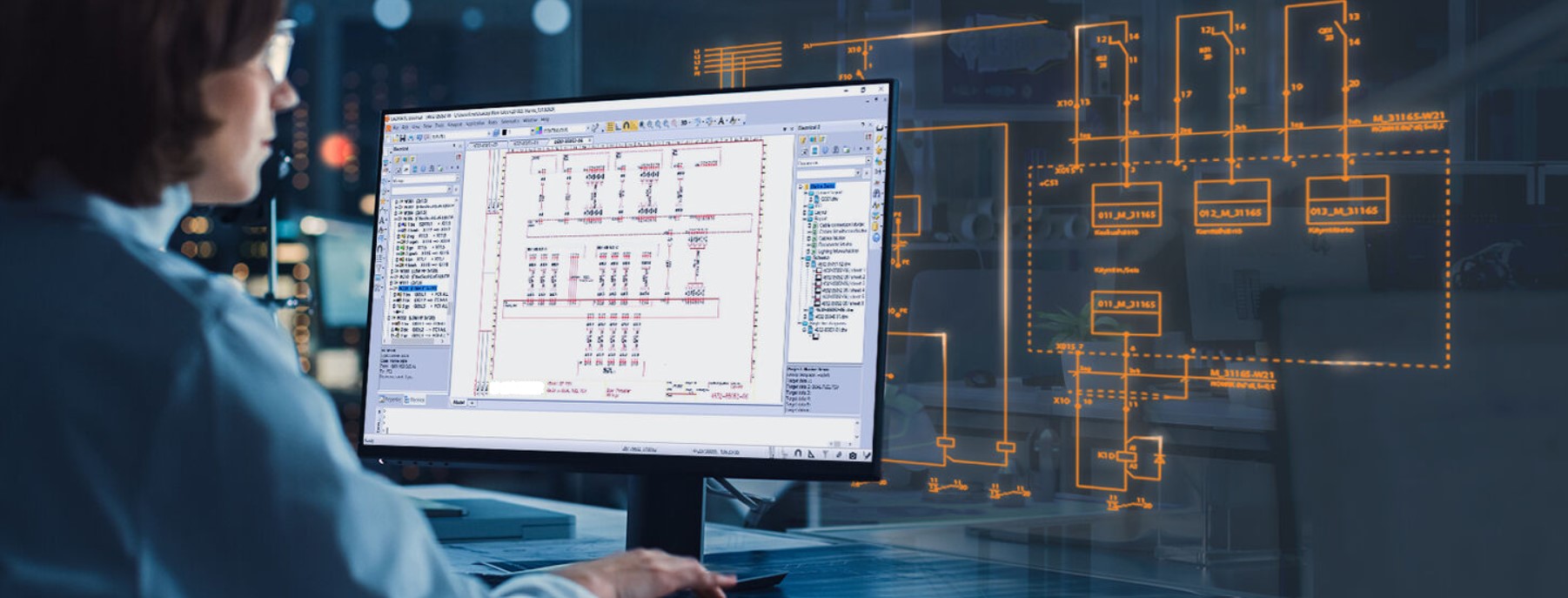Innovative Electrical Design Providers for Modern Infrastructure
The advancement of modern-day framework demands ingenious electric design solutions that not only enhance operational performance however additionally address sustainability difficulties. As urban environments grow progressively intricate, incorporating innovations such as smart grids and renewable resource sources comes to be extremely important. These improvements not just assure to maximize power consumption however additionally foster strength versus future needs. The landscape of electrical design is undertaking quick improvement, triggering a better assessment of emerging patterns and their effects for long-term framework practicality. What might the future hold for those that embrace these innovative methods?
Relevance of Innovative Electrical Design
Innovative electrical design plays an important duty in contemporary framework, affecting not only performance but also sustainability. As cities develop and the need for energy increases, the need for innovative electrical systems ends up being vital. These systems have to not only fulfill current demands however also anticipate future growth and technological advancements.
A well-executed electric design can considerably minimize power usage, consequently lowering functional costs and minimizing environmental influence. By incorporating eco-friendly power sources, such as photovoltaic panels and wind turbines, cutting-edge layouts can enhance energy independence and strength. Clever grid innovations allow for real-time tracking and monitoring of power distribution, optimizing efficiency and minimizing waste.
Security is one more important facet of electric design. Applying extensive criteria and innovative technologies can alleviate risks related to electrical failings, making certain a safe setting for services and locals alike. Additionally, cutting-edge designs facilitate versatility, allowing facilities to integrate emerging technologies effortlessly.
Trick Trends in Electrical Design
As the landscape of electric design continues to evolve, numerous key fads are forming the future of the market. One substantial pattern is the combination of wise technology into electrical systems. The proliferation of the Net of Points (IoT) has enabled real-time monitoring and control of electric tools, enhancing efficiency and facilitating anticipating upkeep.
An additional trend is the expanding focus on modular design. This strategy permits for scalable and versatile remedies, allowing facilities to adapt to changing requirements without considerable renovations. Furthermore, the usage of innovative simulation tools and Structure Info Modeling (BIM) is coming to be progressively widespread, improving the design procedure and improving collaboration amongst stakeholders.
Additionally, improvements in materials science are causing the advancement of lighter, much more long lasting, and energy-efficient components. This advancement is especially essential for high-performance buildings and framework projects.
Lastly, there is a marked shift towards data-driven decision-making - industrial electrical design. Leveraging data analytics assists designers enhance systems for performance and cost-effectiveness. With each other, these patterns symbolize a transformative age in electrical design, improving capability, sustainability, and durability in modern infrastructure
Sustainable Energy Solutions
Sustainable power remedies are significantly coming to be a vital focus in electrical design, reflecting a more comprehensive commitment to environmental responsibility and source efficiency. These options aim to minimize ecological impact while enhancing energy consumption in numerous frameworks, from domestic buildings to large industrial facilities.
Among the primary strategies includes the assimilation of eco-friendly power resources, such as solar panels and wind turbines, into electrical systems. This not only lowers dependency on fossil fuels yet also improves power durability. Additionally, ingenious power storage systems, such as advanced batteries, make it possible for efficient administration and distribution of energy, guaranteeing that excess power generated throughout peak production can be utilized throughout high demand periods.
In addition, energy-efficient design practices are being taken on to improve overall system performance. This includes utilizing energy-efficient lighting, a/c systems, and clever building modern technologies that monitor and adapt energy usage based on occupancy and environmental problems.
Smart Grid Technologies
The execution of sustainable power services normally brings about the exploration of smart grid innovations, which play a pivotal duty in modernizing electric systems. Smart grids take advantage of advanced interaction technologies and data analytics to improve the integrity, efficiency, and sustainability of electricity distribution. By incorporating electronic modern technology with conventional grid facilities, these systems help with real-time monitoring, automated control, and boosted decision-making capacities.
One of the key attributes of smart grids is their capability to fit sustainable energy resources, such as solar and wind power. This adaptability not only lowers dependence on nonrenewable fuel sources however likewise enables a much more decentralized power production version. Additionally, smart grids enable need action programs, where consumers can change their energy use based upon real-time pricing, consequently promoting energy preservation and decreasing peak load demands.
Furthermore, wise grid technologies enhance grid durability by allowing quicker recognition and resolution of blackouts, inevitably minimizing downtime. With anticipating upkeep and analytics, utilities can boost and optimize procedures service delivery. As neighborhoods and cities remain to progress, wise grid technologies are vital for building a sustainable and reliable electrical facilities that meets the demands of contemporary culture.

Future-Proofing Infrastructure
To guarantee long-lasting practicality and versatility, future-proofing framework is essential in the swiftly progressing landscape of electrical design services. As innovation advancements and energy needs shift, it is vital that electrical systems are designed with versatility in mind. This requires including scalable remedies that can accommodate future upgrades without demanding comprehensive overhauls.

Additionally, sustainability should be a cornerstone of future-proofed styles. Making use of renewable energy resources, such as solar and wind, and maximizing energy effectiveness lower dependence on fossil fuels, aligning with worldwide efforts to fight climate change.
Verdict
Finally, cutting-edge electrical design services play a critical role fit modern-day facilities. By focusing on versatility, performance, and sustainability, these solutions deal with the developing demands of power systems. The assimilation of smart grid modern technologies and sustainable power options boosts strength and decreases operational see here expenses. Future-proofing facilities via sophisticated simulation tools and modular strategies guarantees that electrical systems stay receptive to altering needs, ultimately adding to an extra energy-independent and sustainable future.
A well-executed electric design can significantly reduce energy usage, consequently reducing functional costs and decreasing ecological impact. By incorporating renewable energy resources, such as solar panels and wind turbines, cutting-edge designs can enhance power independence and resilience. Additionally, innovative power storage systems, such as advanced batteries, enable efficient management and circulation of energy, ensuring that surplus energy created throughout height manufacturing can be utilized during high demand durations.
Clever grids make it possible for need reaction programs, where consumers can readjust their power use based on real-time prices, therefore advertising power conservation and minimizing reference peak tons needs. (industrial electrical design)
As technology advancements and energy demands change, it is critical that electric systems are designed with flexibility in look these up mind.